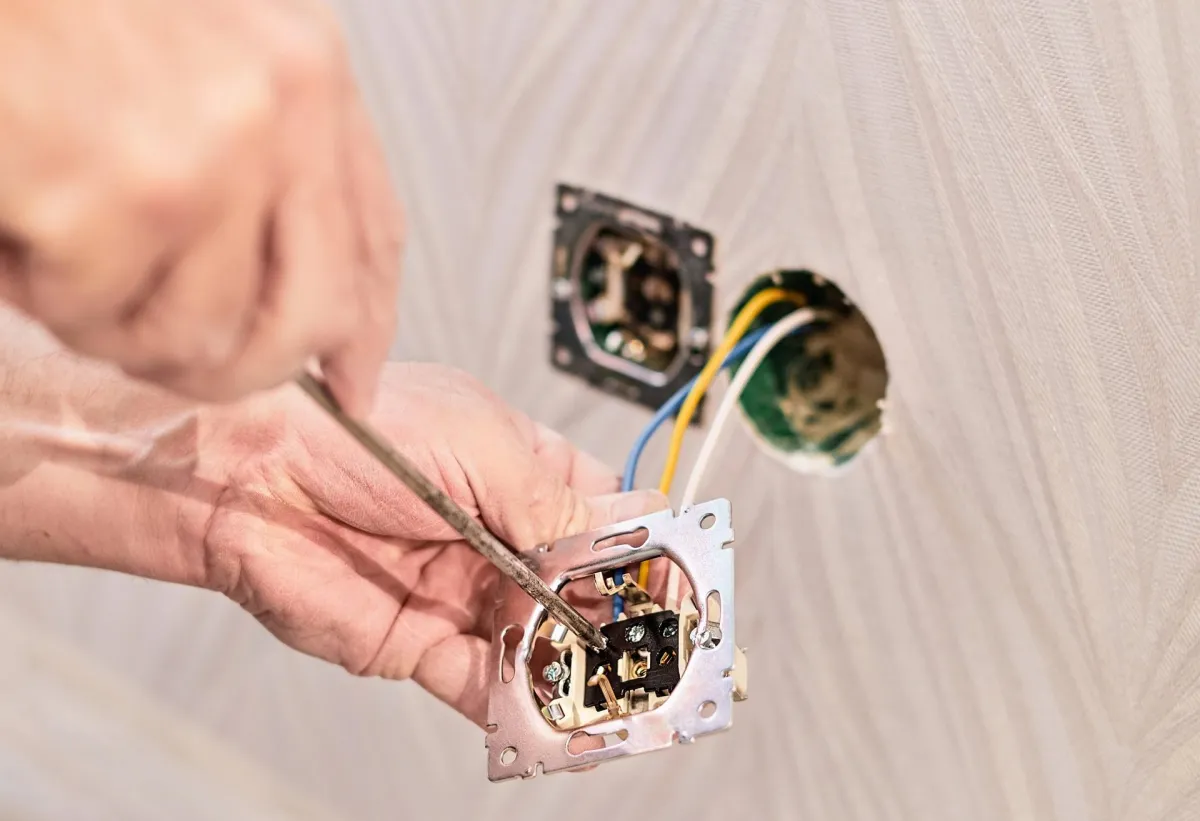ELectrician IN LEHI, UTAH

Troubleshooting Flickering Lights, Surges & Electrical Issues in American Fork
Introduction
You flip on a light in your American Fork home — and it flickers. Or maybe your TV surges, or your breakers trip when the air conditioner kicks on. These symptoms feel mysterious but typically indicate underlying electrical issues that should be addressed promptly.
In this blog, we’ll explore the common causes of flickering lights, voltage surges, and other electric disturbances in homes. You’ll learn how to diagnose (safely), what possible fixes or upgrades are involved, and when to call a professional electrician in Lehi or Utah County.
Why Electrical Issues Happen: Basic Concepts
Before diving into troubleshooting, it helps to understand what electrical “flicker,” “surge,” or “voltage drop” really mean.
Flickering lights occur when the voltage supplied to a light circuit fluctuates, even momentarily.
Voltage surges are brief increases in electrical voltage above the designed level, which can stress wiring and sensitive electronics.
Voltage drops or sags happen when demand is high (e.g. a motor starting), causing momentary dips in voltage.
Other disturbances include noise, arcing, loose wiring, or ground faults.
These issues may stem from internal wiring problems, failing components, overloaded circuits, or even utility company-related wiring upstream of your home.
Common Causes of Flickering Lights, Surges & Electrical Issues
Here are frequent culprits behind the symptoms homeowners see:
Loose or Poor Connections
A wire nut, terminal, switch, outlet, or connection in the breaker panel that is loose or degraded can cause intermittent flicker or surges. Over time, connections can heat, expand, and lose contact.
Overloaded Circuits
When you run multiple heavy appliances or devices on the same circuit (e.g. vacuum, microwave, AC), the load spikes and causes voltage fluctuations or tripping.
Faulty or Incompatible Light Fixtures or Bulbs
LEDs used with incompatible dimmers or old fixtures can flicker. Bulbs that aren’t seated properly or that have worn contacts can also cause intermittent behavior.
Problems in the Main Service or Utility Line
If the issue occurs across multiple circuits or rooms, the root may lie upstream—loose neutral or service conductor problems. Flickering across the whole home often point to service wiring issues. (One user observed that flickering across circuits often indicates something upstream is failing.) Home Improvement Stack Exchange
Voltage Surges from External Events or Internal Switching
Sudden surges can occur when power is restored after an outage, lightning strikes, or from large appliances switching on/off. These stress wiring and devices. AAA Club Alliance+1
Aging or Damaged Wiring
Old or degraded wires may have higher resistance or insulation breakdown, leading to instability in voltage. Arcing or insulation damage are safety concerns. flowrightelectric.com+2Tara Energy+2
Grounding or Neutral Faults
Improper grounding or a bad neutral path can cause unbalanced loads and voltage instability, sometimes making flicker or surging worse.
How to Troubleshoot Safely (and What to Do)
Use these steps to narrow down the issue. Always prioritize safety—turn off power before opening panels or working on circuits.
Step 1: Basic Checks (Household Level)
Replace the bulb or try a different bulb in the fixture to see if flicker stops.
Ensure the bulb is properly seated.
If using dimmers, use bulbs compatible with that dimmer.
Unplug or turn off large appliances that might be pulsing load.
Step 2: Observe Patterns
Does flicker happen when certain appliances switch on (AC, washer, etc.)?
Is the flicker limited to one room or across the entire house?
Does the flicker accompany buzzing sounds, heat, or burning odors?
Step 3: Isolate the Circuit
Turn off circuits one by one to see when the flicker stops.
If shutting off one circuit stops flicker, the problem likely lies in that circuit’s wiring, device, or connections.
Step 4: Check the Panel & Connections
Turn off main power and inspect wiring connections in the panel, breaker, and neutral bar (if comfortable doing so).
Look for loose terminals, corrosion, discoloration, or signs of overheating.
Step 5: Measure Voltage
Use a multimeter or voltage tester to monitor voltage at outlets, especially when flicker happens. Voltage swings may indicate load or service issues.
If the voltage dips significantly when appliances turn on, it may point to wiring or service capacity limitations.
Step 6: Call a Professional Electrician
If you detect flickering across multiple circuits, have irregular voltage, or suspect service wiring issues—call a licensed electrician. They can inspect the main service line, replace bad connections, upgrade circuits, or install surge protection.
Frequently Asked Questions
Q: When is flickering a sign of something dangerous?
A: If flickering is frequent, affects multiple areas, comes with buzzing or burning smells, or shows signs of overheating, it may indicate loose connections or arcing—potential fire risk. dunedinelectric.com+1
Q: Can power surges damage my electronics?
A: Yes. Even short voltage spikes stress or degrade sensitive components. Repeated surges shorten lifespans or can instantly damage devices. AAA Club Alliance+2marionks.net+2
Q: What’s the difference between flicker and surge?
A: Flicker typically involves voltage fluctuation that causes visible lights to dim or blink. Surges are brief over-voltage events that momentarily push voltage above normal limits.
Q: Do I need a panel upgrade to solve these problems?
A: Sometimes. If your panel is undersized, overloaded, or has limited circuit capacity, renovation or an upgrade may stabilize voltage and improve reliability.
Q: How effective are surge protectors?
A: Surge protectors help absorb transient spikes. A whole-home or panel-level surge arrestor offers stronger protection than individual plug strips. Proper grounding is critical for them to work. Wikipedia+2Reliant Energy+2
Conclusion
Flickering lights, surges, and other odd electrical behavior in your American Fork home are not just nuisances—they’re red flags that your wiring, connections, or service may require attention. Start with simple checks like bulbs and appliances. Then observe patterns, isolate circuits, and check panel connections. If issues persist or spread, a qualified electrician (serving Lehi, Utah County) should diagnose and fix the root problem to keep your home safe, stable, and code-compliant.
Our Services
Helpful Links
© 2025 All Rights Reserved | Bar H Bar Electric
